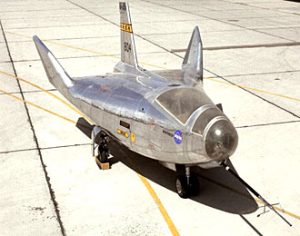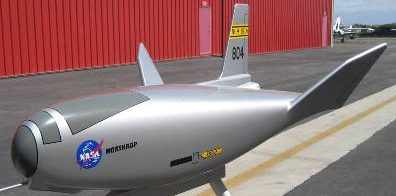In mid-1964 Northrop Corporation was contracted by the U.S. National Aeronautics and Space Administration (NASA) to produce two allmetal wingless lifting body re-entry research vehicles, based on experience gained with the Northrop M2-F1 glider, which made more than 500 flights in 1963-64. The two new vehicles were designated M2-F2 and HL-10 (Horizontal Landing, 10th concept) and differed in under and upper surface fuselage shapes. First flight of the HL-10 was on December 22, 1966 during which it had major control problems requiring minor changes to the shape of the vertical fins. The first 11 drop flights from a B-52 launch aircraft were powerless glide flights to assess handling qualities, stability and control. The HL-10 was flown 37 times and with the use of a rocket engine reached 1,228 miles per hour and an altitude of 90,000 feet.

The actual HL-10 craft had a width of 15 feet, was about 22 feet long and about 11 feet high and had a launch weight of about 9,400 pounds.
The data collected during the lifting body program helped in the development of the Space Shuttle.

